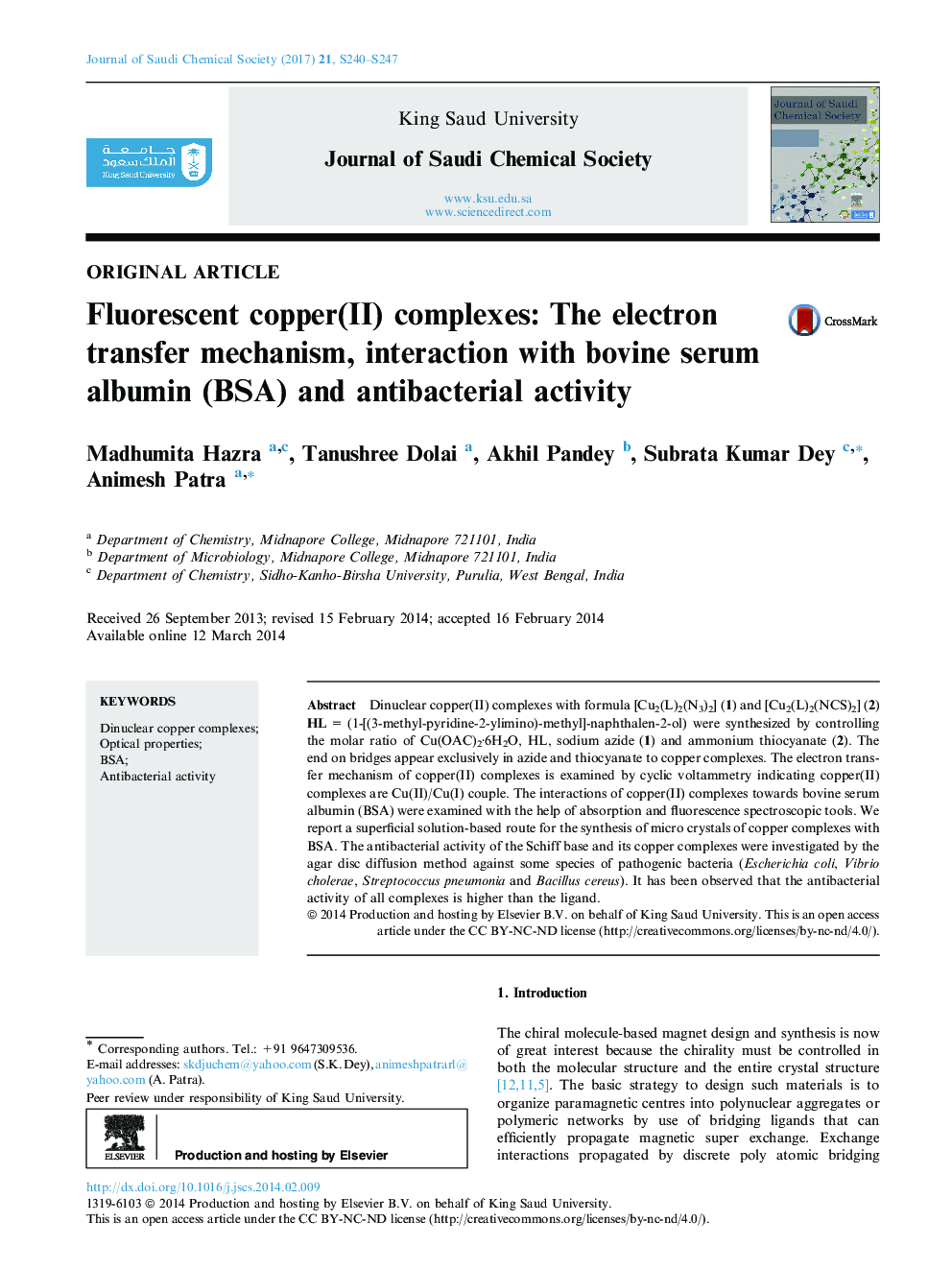| کد مقاله | کد نشریه | سال انتشار | مقاله انگلیسی | نسخه تمام متن |
|---|---|---|---|---|
| 4909421 | 1362620 | 2017 | 8 صفحه PDF | دانلود رایگان |

Dinuclear copper(II) complexes with formula [Cu2(L)2(N3)2] (1) and [Cu2(L)2(NCS)2] (2) HL = (1-[(3-methyl-pyridine-2-ylimino)-methyl]-naphthalen-2-ol) were synthesized by controlling the molar ratio of Cu(OAC)2·6H2O, HL, sodium azide (1) and ammonium thiocyanate (2). The end on bridges appear exclusively in azide and thiocyanate to copper complexes. The electron transfer mechanism of copper(II) complexes is examined by cyclic voltammetry indicating copper(II) complexes are Cu(II)/Cu(I) couple. The interactions of copper(II) complexes towards bovine serum albumin (BSA) were examined with the help of absorption and fluorescence spectroscopic tools. We report a superficial solution-based route for the synthesis of micro crystals of copper complexes with BSA. The antibacterial activity of the Schiff base and its copper complexes were investigated by the agar disc diffusion method against some species of pathogenic bacteria (Escherichia coli, Vibrio cholerae, Streptococcus pneumonia and Bacillus cereus). It has been observed that the antibacterial activity of all complexes is higher than the ligand.
Journal: Journal of Saudi Chemical Society - Volume 21, Supplement 1, January 2017, Pages S240-S247